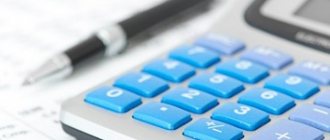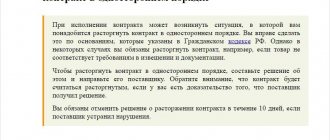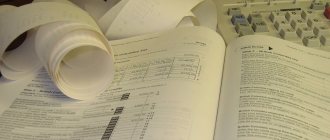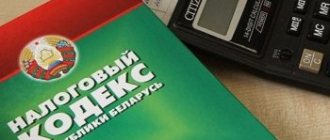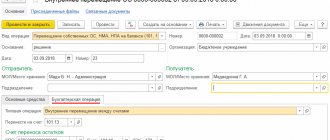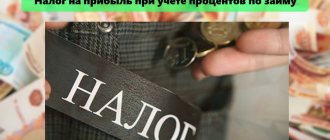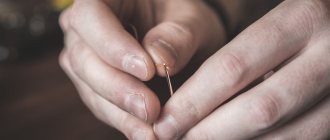Medical services
In Art. 149 of the Tax Code lists all goods and services that are not subject to value added tax. These include medical services and several other types of services that can be found in clinics:
- care for children and the sick;
- sale of a number of medical products.
A prerequisite for VAT exemption is that the clinic must have a license to provide these services.
There is another document that declares exemption from VAT for medical services in 2022 - this is the Decree of the Government of the Russian Federation No. 132 of February 20, 2001. The resolution provides a list of services in day and 24-hour hospitals, services of clinics and sanatoriums, services for conducting medical examinations and sanitary and hygienic measures.
Another document that explains the VAT exemption is the letter of the Department of Tax and Customs Policy of the Ministry of Finance of the Russian Federation No. 03-07-07/97292 dated December 12, 2019.
The concept of medical services is in Federal Law-323 “On the Protection of Citizens’ Health”. This document states that a medical service is a complex of medical interventions, including diagnosis, prevention, treatment of diseases and medical rehabilitation.
The law classifies medical services not subject to VAT as:
- services from the list that are provided under compulsory medical insurance;
- services for diagnosis, prevention and treatment from the list approved by Decree of the Government of the Russian Federation of February 20, 2001 No. 132;
- blood collection services;
- emergency medical services;
- services for medical staff on duty next to seriously ill patients;
- pathological and anatomical.
Cosmetic, veterinary and sanitary-epidemiological services are subject to VAT (except for those veterinary and sanitary-epidemiological services that are financed from the budget).
The Tax Code of the Russian Federation does not provide regulations regarding the form of payment for medical services, so services are not subject to VAT, regardless of cash or non-cash form of payment. The benefit also applies when providing services to citizens who are paid for by a legal entity - for example, their employers (letter of the Federal Tax Service of Russia dated March 27, 2013 No. ED-18-3 / [email protected] ) or insurance companies (letter of the Ministry of Finance of Russia dated June 17, 2015 No. 03-07-07/35004, dated 02/26/2013 No. 03-07-07/5466).
Keep records of exports and imports in the Kontur.Accounting web service. Simple accounting, payroll and reporting in one service
Chapter 7. Taxation in medical organizations (1st level)
- 7.1. Calculation and payment of VAT and excise taxes in medical organizations (2nd level)
- 7.2. Special tax regimes in healthcare institutions (2nd level)
Excise taxes.
In accordance with subparagraph 2 of paragraph 1 of Article 181 of the Tax Code of the Russian Federation, excisable goods are alcohol-containing products (solutions, emulsions, suspensions and other types of products in liquid form) with a volume fraction of ethyl alcohol of more than 9 percent. In this case, the following are not considered as excisable goods:
medicinal, treatment-and-prophylactic, diagnostic products that have passed state registration with the authorized federal executive body and are included in the State Register of Medicines and Medical Products,
medicinal, therapeutic and prophylactic products (including homeopathic drugs), manufactured by pharmacy organizations according to individual recipes and the requirements of medical organizations, bottled in containers in accordance with the requirements of state standards of medicines (pharmacopoeial articles), approved by the authorized federal executive body.
In accordance with Article 149 of the Tax Code of the Russian Federation, the following are not subject to taxation:
1. provision by the lessor of premises for rent on the territory of the Russian Federation to foreign citizens or organizations accredited in the Russian Federation.
2. sale (as well as transfer, execution, provision for one’s own needs) on the territory of the Russian Federation:
1) the following medical goods of domestic and foreign production according to the list approved by the Government of the Russian Federation:
essential and vital medical equipment;
prosthetic and orthopedic products, raw materials and materials for their production and semi-finished products for them;
technical means, including motor vehicles, materials that can be used exclusively for the prevention of disability or rehabilitation of disabled people;
glasses (except for sunglasses), lenses and frames for glasses (except for sunglasses);
2) medical services provided by medical organizations and (or) institutions, doctors engaged in private medical practice, with the exception of cosmetic, veterinary and sanitary-epidemiological services. The restriction established by this subparagraph does not apply to veterinary and sanitary-epidemiological services financed from the budget.
Medical services include:
services specified in the list of services provided under compulsory health insurance;
services provided to the population for diagnosis, prevention and treatment, regardless of the form and source of payment, according to the list approved by the Government of the Russian Federation;
services for collecting blood from the population, provided under contracts with inpatient medical institutions and outpatient departments;
emergency medical services provided to the population;
services for medical personnel on duty at the patient’s bedside;
pathological-anatomical services;
services provided to pregnant women, newborns, disabled people and drug addicts.
According to subparagraph 4 of paragraph 2 of Article 164 of the Tax Code of the Russian Federation, when selling medicines, including medicinal substances, including in-pharmacy production, and medical products of domestic and foreign production, value added tax is taxed at a tax rate of 10 percent.
Separately, I would like to dwell on the procedure for recording costs associated with the provision of preferential or free (charitable) services by medical centers. Costs for gratuitous services are not accepted for tax purposes (subclause 16, article 270, part two of the Tax Code of the Russian Federation).
According to subparagraph 1 of paragraph 1 of Article 146 of Part Two of the Tax Code of the Russian Federation, the provision of services free of charge is recognized as their sale and subject to VAT. In this case, the tax base is calculated based on prices determined in accordance with Article 40 of Part One of the Tax Code of the Russian Federation (Clause 1 of Article 154 of Part Two of the Tax Code of the Russian Federation). This means that the tax base is taken as the market price for medical services provided free of charge, that is, either the cost of identical services provided by this organization, or (in their absence) homogeneous services provided by other companies in a similar field of activity.
In accounting, costs for services provided free of charge are reflected in account 91 “Other income and expenses”, subaccount 91-2 “Other expenses”:
debit account 91-2 credit account 20 (26)
– the actual cost of services provided free of charge is written off;
debit of account 91-2 credit of account 68, subaccount “VAT calculations”
– VAT is charged on services provided free of charge.
Most medical services are not subject to VAT. Therefore, medical organizations usually do not transfer this tax to the budget. At the same time, in practice, commercial medical firms often rent premises from a state or municipal authority. In this case, doctors must transfer VAT to the budget for the landlord.
Example 1.
LLC provides VAT-free medical services.
The LLC rents premises in the district clinic from the municipal authority. The monthly rent is 20,000 rubles. Rent for July was transferred in August 2006.
The lease agreement concluded with a state or municipal authority specifies the amount including VAT. Therefore, the landlord’s demands to pay VAT on top of the rental amount are unfounded.
Despite the fact that the LLC does not provide services subject to VAT, the accountant of this organization must transfer the amount of VAT on the rent to the budget. Indeed, in this case, the LLC acts as a tax agent (clause 3 of Article 161 of the Tax Code of the Russian Federation).
VAT must be calculated on the entire rental amount. In this case, the accountant of the LLC, “according to paragraph 4 of Article 164 of the Tax Code of the Russian Federation, needs to use the calculation method, that is, multiply the amount of the rent by the rate. The rate is determined as a percentage of the tax rate (10 or 18%) to the tax base, taken as 100 and increased by the corresponding tax rate. The LLC must transfer VAT on rent in whole rubles:
20,000 rub. ? 18%: (100% + 18%) = 3051 rub.
For the amount of VAT on rent, you need to draw up an invoice in one copy. and make a note “Rental of municipal property”. In this case, it is necessary to be guided by the letter of the State Tax Service of Russia dated March 20, 1997 No. ВЗ-2-03/260. The amount of VAT on rent (3,051 rubles) must be transferred to the LLC budget no later than the 20th day of the month following the expired tax period (clause 1 of Article 174 of the Tax Code of the Russian Federation).
The tax period for VAT for a medical organization can be either a month or a quarter. Everything depends on revenue.
If it is less than RUB 1,000,000. (excluding VAT) for a quarter, then the tax period is equal to a quarter, otherwise – to a month (Article 163 of the Tax Code of the Russian Federation).
In this case, the revenue does not need to include the amount of rent that the organization transfers to the lessor. The LLC's revenue exceeds 1,000,000 rubles, so the VAT tax period is a month.
In a payment order for the transfer of VAT on rent, code 02 must be indicated in field 101. If an organization indicates code 01, then it will transfer the tax for itself, and not for the landlord.
Having transferred the rent and VAT on this amount, you should register the previously drawn up invoice in the sales book. The LLC cannot accept for deduction “input” VAT on rent payments. The fact is that a tax agent can reimburse “input” VAT only if he carries out transactions subject to VAT (clause 3 of Article 171 of the Tax Code of the Russian Federation). Thus, the invoice issued by the organization is not entered into the purchase book, because only those for which a tax deduction is applied are registered there.
No later than the 20th day of the month following the expired tax period, a VAT return is submitted to the tax office.
Operations for renting municipal property.
In July:
debit 20 credit 60 20,000 rub.
– rent for July has been accrued.
In August:
debit 60 credit 68 subaccount “VAT calculations” 3051 rub. (RUB 20,000 ? 18%: 118%)
– VAT payable to the budget has been accrued;
debit 60 credit 51 16,949 rub. (20,000 – 3051)
– the rent is transferred to the lessor;
debit 68 subaccount “Calculations for VAT” credit 51 3051 rub.
– transferred to the VAT budget.
VAT on the provision of medical services.
Not all types of activities of medical organizations are exempt from VAT; organizations can offset “input” VAT on them. However, they can only do this if they keep separate records.
Clause 6.17.1 of the Methodological Recommendations for the Application of Chapter 21 “Value Added Tax” of the Tax Code of the Russian Federation provides an additional condition for the application of benefits for the manufacture of medicines. To take advantage of the benefit, medicines must be manufactured under contracts with legal entities (for example, hospitals) and from the customer’s raw materials.
Also, according to subparagraph 18 of paragraph 3 of Article 149 of the Tax Code of the Russian Federation, services of sanatorium-resort, health-improving and recreational organizations located in Russia, issued with vouchers or course vouchers, which are strict reporting forms, are not subject to VAT.
Based on the conditions discussed above for the exemption of medical services from VAT, we can draw conclusions about which medical services are still subject to VAT.
Thus, pharmacies will have to charge and pay VAT on operations for the manufacture of medicines in all cases, except for the manufacture of medicines from the customer’s raw materials under an agreement with a legal entity.
A sanatorium-resort institution will also charge VAT if its services are not issued with vouchers or course vouchers, which are recognized as strict reporting forms.
Let us also draw attention to the fact that the exemption provided for by subparagraph 2 of paragraph 2 of Article 149 of the Tax Code of the Russian Federation does not apply to cosmetic services.
You will also have to pay VAT to organizations and private practitioners who provide veterinary and sanitary-epidemiological services if their activities are not financed from the budget.
A private clinic that does not receive funding from the budget or the compulsory health insurance fund will also have to pay VAT on operations to provide food to its patients.
A medical organization has the right not to maintain separate accounting for VAT and accept all VAT for deduction. But for this it is necessary that the share of expenses for services on which VAT is not paid should be no more than 5 percent of the organization’s total VAT expenses for the tax period.
If a medical organization carries out activities subject to VAT and activities not subject to this tax, then it is obliged to maintain separate records. This is defined in paragraph 4 of Article 149 of the Tax Code of the Russian Federation.
It follows from paragraph 1 of Article 153 of the Tax Code of the Russian Federation that it is necessary to maintain separate accounting for transactions that are subject to different VAT rates.
If the tax falls on goods and services that are used in activities not subject to VAT, then in this case the “input” VAT must be included in their cost. If it’s the other way around, then the “input” VAT can be deducted.
It happens that the same goods and services are used in both VAT-taxable and non-VAT-taxable activities. In this case, the “input” VAT must be divided between these types of activities. For this purpose, the share from the provision of VAT-taxable services to total income and the share from the provision of VAT-free services to total income are used.
Medical organizations can apply a simplified taxation system and can be transferred to UTII. Moreover, they can be subject to two taxation regimes.
If a medical organization applies the “simplified tax” simultaneously with UTII (for example, it provides veterinary services and sells medicines), then the accountant is obliged to organize separate accounting of income and expenses, property, liabilities and business transactions from these types of activities.
Within the framework of the simplified tax system, when choosing income reduced by the amount of expenses as an object of taxation, the taxpayer must be sure that this or that expense was incurred specifically for activities taxed under the “simplified” and not the “imputed” system. In the first case, it will affect the amount of tax due to be paid to the budget, but in the second - not.
However, even when using the “simplified taxation” with the object of taxation “income”, the organization is interested in ensuring that separate accounting of transactions is carried out correctly and justifiably. After all, the amount of the “imputed” tax does not change depending on whether a lot or little income is received from activities carried out within the framework of this tax regime, which cannot be said about the single “simplified” tax.
So it will be important for the taxpayer to reasonably prove that this or that income relates specifically to activities under the UTII system.
According to paragraph 8 of Article 346.18 of the Tax Code of the Russian Federation, expenses, if it is impossible to divide them, are determined in proportion to the share of income from the corresponding type of activity in the total income of the organization.
Thus, if an expense cannot be unambiguously qualified as relating to a “simplified” or “imputed” taxation system, the amount that can be taken to reduce the tax base for a single tax under a simplified taxation system can be determined using the formula:
expenses related to simplified tax system = income from activities according to the simplified tax : income from all types of activities x the amount of expenses related to the simplified tax system and UTII activities
Not all expenses related to “simplified” activities can be accepted for tax purposes, only those listed in paragraph 1 Article 346.16 of the Tax Code of the Russian Federation.
When combining the general regime and UTII, in order to avoid distortion of the tax base for corporate income tax, expenses should be distributed between types of activities by reporting periods on an accrual basis from the beginning of the year. At the same time, the income in proportion to which such distribution of expenses is carried out is also calculated on an accrual basis from the beginning of the year (Letter of the Ministry of Finance of Russia dated March 14, 2006 No. 03-03-04/1/224).
Example 2.
A medical organization carries out two types of activities. For activities related to the provision of services, the company applies the “simplified tax” system, and for the sale of medicines at retail, it has been transferred to the payment of UTII.
Organizations using the simplified system may not keep accounting records. And organizations transferred to pay UTII must keep accounting records.
In such a situation, according to the Russian Ministry of Finance, the organization must maintain accounting and present financial statements for the organization as a whole (see Letter dated March 26, 2004 No. 04-02-03/69). In this case, the organization reflects expenses for different types of activities in different accounts:
– for medical services – on account 20;
– for the sale of medicines – on account 44.
But to reflect financial results, the company needs to open different sub-accounts for account 99:
– subaccount “USN”;
– subaccount “UTII”.
Let us assume that at the end of the reporting period:
– revenue from medical services – 600,000 rubles;
– direct expenses for medical activities (rent of premises, depreciation of equipment, salaries of medical workers with deductions) – 80,000 rubles;
– revenue from retail trade – 200,000 rubles;
– cost of medicines – 180,000 rubles;
– direct expenses for retail trade (salaries of salespeople, rent of premises, depreciation of retail equipment) – 50,000 rubles;
– indirect costs (maintenance of the management staff, rent of common premises, cleaning of premises, etc.) – 70,000 rubles.
The total revenue is:
600,000 rub. + 200,000 rub. = 800,000 rub.
We determine the share of income from retail trade. It will be equal to:
200,000 rub.: 800,000 rub. ? 100% = 25%.
Indirect costs are distributed in proportion to the share of income received from each type of activity. Then retail trade indirect costs account for:
70,000 rub. ? 25% = 17,500 rub.
And the share of medical services accounts for indirect costs:
70,000 rub. – 17,500 rub. = 52,500 rub.
In the organization’s accounting, the accountant will reflect the distribution of expenses between types of activities as follows:
debit 44 credit 26 17,500 rub.
– expenses related to retail trade (activities under UTII) are written off;
debit 20 credit 26 52,500 rub.
– expenses attributable to medical services are written off (activities under the simplified tax system).
Example 3.
The pharmacy dispenses medicines both in cash to customers and by bank transfer to hospitals. At the same time, cash trading has been transferred to the payment of a single tax on imputed income. For the first quarter of 2006, the pharmacy's revenue from the sale of medicines amounted to: - for cash payments - 210,000 rubles. (without VAT);
– for non-cash payments – 139,700 rubles. (including VAT at a rate of 10% - 12,700 rubles).
The pharmacy stores all medications in a warehouse. The residual value of drugs in this warehouse as of April 1, 2006 is 320,000 rubles. When calculating property tax for the first quarter of 2006, you can include in the calculation only part of the residual value of drugs from the warehouse:
320,000 rub. ? (RUB 139,700 – RUB 12,700): (RUB 210,000 + RUB 139,700 – RUB 12,700) = RUB 120,593.47
Example 4.
The pharmacy dispenses medications using free and discounted prescriptions.
Its activities in the retail trade of medicines have been transferred to the payment of a single tax on imputed income.
In March 2006, the pharmacy purchased 300 packages of Tsifran for 118.8 rubles. per package (including VAT at the rate of 10% - 10.8 rubles). Assume that the maximum retail markup for free and discounted prescription drugs is 20 percent. Therefore, the pharmacy can set the sales price for Tsifran no higher than:
118.8 rub./pack. + 118.8 rub./pack. ? 20% = 142.56 RUR/pack.
Table of contents
Not subject to VAT
First of all, the most important and vital medical products are not subject to VAT. They are listed in the Decree of the Government of the Russian Federation dated September 30, 2015 No. 1042, which is based on paragraph 2 of Article 150 of the Tax Code of the Russian Federation, paragraph 1 of paragraph 2 of Article 49 of the Tax Code of the Russian Federation. This is a closed list; it can only be changed or supplemented by the officials themselves, which they do if necessary. For example, the list of medical products in Government Decree No. 1042 was updated four times in 2022.
Here are the types of goods that medical institutions can purchase and sell and which are not subject to VAT:
- medical equipment and medical products according to special lists introduced by the Government of the Russian Federation (subclause 1, clause 2, article 149 of the Tax Code of the Russian Federation);
- equipment for the rehabilitation of disabled people or the prevention of disability - the list is in the Decree of the Government of the Russian Federation dated September 30, 2015 No. 1042;
- food products that are produced in the canteens of medical institutions and are sold in such institutions, as well as food products that are produced in catering establishments and are sold to canteens in medical institutions (subclause 5, paragraph 2, article 149 of the Tax Code of the Russian Federation and letter of the Federal Tax Service of Russia dated October 19, 2011 No. ED-4-3/ [email protected] ).
VAT is not assessed on medical goods produced in Russia or other countries, sold in Russia or imported.
Conditions of the basic taxation system for individual entrepreneurs
Individual entrepreneurs, in turn, using this tax regime pay:
- personal income tax or personal income tax (rate 13%);
- property tax for individuals (rate up to 2%);
- VAT (rate 0%, 10%, 18%) (but, as mentioned above, VAT is not paid when carrying out medical activities).
You should also know that if a medical organization (individual entrepreneur) receives a loss, then it does not pay income tax, and it is possible to take this loss into account in the future (reduce the amount of tax by the amount of the loss). Also, you must remember that you cannot combine general and simplified taxation systems.
For the traditional tax system, it is mandatory to provide a tax return. The tax return is submitted quarterly (clause 1 of Article 386 of the Tax Code of the Russian Federation).
The tax period is recognized as 1 year (clause 1 of Article 285 of the Tax Code of the Russian Federation, clause 1 of Article 379 of the Tax Code of the Russian Federation).
Reporting period:
- for corporate income tax - first quarter, half year, 9 months (clause 2 of Article 285 of the Tax Code of the Russian Federation);
- for property tax of organizations - first quarter, six months, 9 months (clause 2 of Article 379 of the Tax Code of the Russian Federation).
Also, it is worth knowing that when using the main taxation system, the use of cash register equipment (CCT) is mandatory (Article 2 of the Federal Law of May 22, 2003 No. 54-FZ “On the use of cash register equipment when making cash payments and (or) payments using payment cards").
Subject to VAT at the rate of 10%
When importing or selling medical goods, a preferential rate of 10% applies (clause 4, clause 2 and clause 5, article 164 of the Tax Code of the Russian Federation). Codes of medical products that can be imported and sold at a preferential rate of 10% are listed in Decree of the Government of the Russian Federation dated September 15, 2008 N 688 (as amended on March 20, 2018). Officials also adjust Resolution No. 688 almost every year.
Here are the types of goods taxed at a 10% rate:
- medicines for treatment and clinical research, including pharmaceutical substances, medicinal products manufactured by pharmacies;
- medical products except for the most important and vital medical products from List No. 1042.
Simplified taxation system
The simplified tax system is a fairly favorable tax regime. The tax burden on a taxpayer using the simplified tax system is comparatively less than the burden on a taxpayer using the traditional tax system.
The list of activities on the simplified tax system is open.
The simplified taxation system involves 2 taxation options:
- if the object of taxation is income, the tax rate is set at 6% of income (in this case, the amount of insurance premiums paid for enrolled employees reduces the amount of tax) - it is more profitable to use when providing services.
- if the object of taxation is income reduced by the amount of expenses, the tax rate is set at 15% of income (in this case, the amount of paid insurance premiums is included in the expenses of the enterprise) - more profitable for the trade sector.
For the simplified tax system, it is necessary to submit a tax return at the end of the year (subclause 1 of clause 1 of Article 346.23 of the Tax Code of the Russian Federation). The provision of a tax return is carried out based on the results of the year (subparagraph 1 of paragraph 1 of Article 346.23 of the Tax Code of the Russian Federation). In addition, a book of income and expenses is kept (Article 346.24 of the Tax Code of the Russian Federation).
The tax period is 1 year (clause 1 of Article 346.19 of the Tax Code of the Russian Federation).
The reporting period is the first quarter, half a year, 9 months of the calendar year (clause 2 of Article 346.19 of the Tax Code of the Russian Federation).
For the simplified taxation system, as well as for the traditional taxation system, the use of cash register equipment is mandatory.
It is also necessary to maintain a book of income and expenses (Article 346.24 of the Tax Code of the Russian Federation).
Conditions for applying preferential rates
Registration certificate. To apply a 0% or 10% preferential rate, the taxpayer must have a registration certificate for medical products or equipment. If there is no registration certificate with the code or it is expired, the right to a preferential rate is lost, and VAT will have to be paid at a rate of 20% (letters of the Ministry of Finance of Russia dated September 13, 2018 No. 03-09-19/65511, dated January 24, 2018 No. 03-07- 07/3560).
Compliance with codes. The registration certificate of a medical product must contain a code. Goods produced in Russia have a code from the All-Russian Classification of Products (OKPD 2), and imported goods have a code from the Commodity Nomenclature of Foreign Economic Activity of the Eurasian Economic Union (TN VED EAEU).
To be exempt from VAT, the code according to the Commodity Code for Foreign Economic Activity of the EAEU or OKPD 2 in the registration certificate of a medical product must match the code from the list in Government Decree No. 1042 or in Decree No. 688. If the company cannot provide such a registration certificate, it will have to pay VAT at a rate of 20%.
Be careful, ask suppliers for registration certificates for medical products in order to apply preferential rates, and monitor the statute of limitations on these certificates. Carefully check the code in the registration certificate and the code in List No. 1042 or List No. 688. During audits, the tax office requests registration certificates and checks codes to ensure your right to a preferential rate. If the codes do not match or the certificate has expired, you will be charged additional VAT and may be fined.
Keep records in the cloud service Kontur.Accounting and optimize VAT in legal ways. The system will tell you how you can reduce your tax and what you need to do to achieve this. The service includes simple accounting, payroll, reporting and other tools for managers and accountants. The first two weeks are free for all new users.
Tax regimes applicable to medical activities
Since in the future we will only talk about those tax regimes that can be applied when carrying out medical activities, then immediately, cutting off the unnecessary and not related to medical activities, we will designate the taxation systems that interest us:
- general taxation system;
- simplified taxation system;
- patent tax system.
Factors influencing the cost of a patent
The amount of the patent cost to be paid is a fixed, pre-calculated amount that does not depend on the actual income of the individual entrepreneur.
The cost of a patent is influenced by the following factors:
- the region in which the patent is acquired;
- the type of activity for which a patent is acquired;
- average number of employees;
- period of patent use.
At the same time, the tax rate for the acquisition of a patent is 6% of potential income (based on Article 346.50 of the Tax Code of the Russian Federation). The value of potential income for the corresponding type of business activity is established directly by the law of the subject of the Russian Federation in which the patent is acquired (Article 346.47 of the Tax Code of the Russian Federation, 346.48 of the Tax Code of the Russian Federation). The taxpayer can find out the cost of a patent, taking into account his own conditions (patent term, region, etc.) on the website of the Federal Tax Service at patent.nalog.ru, using the “patent calculator”. However, it is extremely important to understand that the final value of the patent is calculated by the tax office when submitting the application.
Patent tax system
Now let's move on to considering the patent taxation system. Note that this is a relatively new tax regime, which has been in effect in the Russian Federation for only a couple of years (namely, since 01/01/2013). As practice shows, the patent tax system is currently used by an extremely small number of taxpayers. It seems to us that the situation is like this due to the fact that someone does not know about this tax regime, and someone has no idea how to apply this regime. It is not for nothing that the Federal Tax Service of Russia, in its Letter dated August 3, 2015 No. ED-4-3/13578 “On sending a letter to the Ministry of Finance of Russia,” gives detailed explanations about the application of the patent taxation system.
Let us immediately make a reservation that only individual entrepreneurs have the right to use the patent taxation system (paragraph 2 of paragraph 1 of Article 346.43 of the Tax Code of the Russian Federation). Legal entities cannot use this tax regime.
The patent taxation system can be applied to certain types of business activities, among which is the engagement in medical activities or pharmaceutical activities by a person licensed for these types of activities (subclause 38 of clause 2 of part 2 of Article 346.43 of the Tax Code of the Russian Federation). This means that the list of activities for which the patent tax system can be used is closed.
Note that for the patent taxation system there is no complex accounting and reporting procedure:
- an individual entrepreneur does not need to pay taxes based on the results of each quarter;
- an individual entrepreneur does not need to submit a report to the tax office;
- a tax return for tax paid in connection with the application of the patent taxation system is not submitted to the tax authorities (Article 346.52 of the Tax Code of the Russian Federation). However, individual entrepreneurs using the patent system are required to keep tax records of income in order to monitor compliance with the restrictions on income from sales in the income book. This book is compiled separately for each patent received (clause 1 of Article 346.53 of the Tax Code of the Russian Federation);
- individual entrepreneurs using the patent tax system are not recognized as taxpayers of value added tax (clause 11 of Article 346.43 of the Tax Code of the Russian Federation);
- an individual entrepreneur simply acquires a patent and also chooses the validity period of this patent (from 1 month to 12 months). The tax amount is calculated by the tax authority directly in the patent, and is clear to the taxpayer.
Follow us
Subscribe to the newsletter and be the first to receive the latest and most relevant information from the Faculty of Medical Law.
By submitting an application, you agree to the terms of processing and use of personal data.
In addition, the use of the patent tax system by individual entrepreneurs provides for their exemption from the obligation to pay (based on paragraph 10 of Article 346.43 of the Tax Code of the Russian Federation):
- tax on income of individuals (in terms of income received in the implementation of types of business activities in respect of which the patent taxation system is applied);
- property tax for individuals (in terms of property used in carrying out types of business activities in respect of which the patent taxation system is applied, with the exception of objects of taxation with property tax for individuals included in the list determined in accordance with paragraph 7 of Article 378.2 of this Code with taking into account the features provided for in paragraph two of paragraph 10 of Article 378.2 of the Tax Code of the Russian Federation).
Individual entrepreneurs using the patent taxation system can make payments without the use of cash register equipment, provided that, at the request of the buyer (client), a document is issued confirming the receipt of funds for the relevant product (work, service). The specified document is issued at the time of payment for goods (work, services) (based on part 2.1. Article 2 of the Federal Law of May 22, 2003 No. 54-FZ “On the use of cash register equipment when making cash payments and (or) settlements using payment kart").
Among other things, it is worth knowing that an individual entrepreneur who has received a patent in one subject of the Russian Federation has the right to obtain it in another subject of the Russian Federation.
A patent is acquired by a taxpayer for a period of 1 month to 1 year. After the expiration of the period for which the patent was purchased, it must be purchased again.
The patent taxation system can be used along with the general taxation system and the simplified taxation system.
